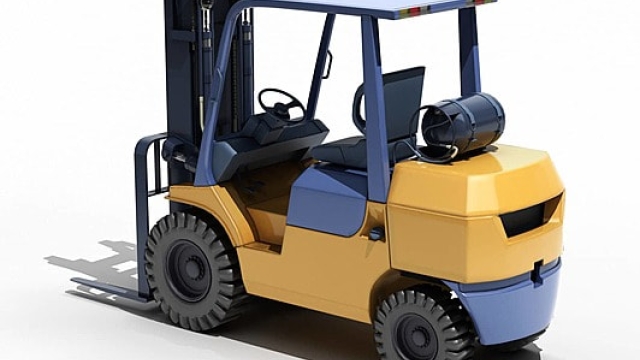 When considering the best equipment for their operations, businesses are often advised to Compare Options to ensure they do not compromise on quality while chasing lower costs.
When considering the best equipment for their operations, businesses are often advised to Compare Options to ensure they do not compromise on quality while chasing lower costs.
When businesses seek to optimize their operations, the allure of low-cost forklifts can be hard to resist. The promise of significant savings often leads many to overlook the potential pitfalls associated with cheap equipment. However, insights from forklift manufacturers reveal that investing in budget options can result in hidden costs that far outweigh initial savings.
Understanding the long-term implications of choosing a cheap forklift is crucial for any company that relies on material handling. From decreased durability and performance to higher maintenance and repair costs, these factors can significantly impact overall productivity and operational efficiency. As leading manufacturers share their experiences, it becomes evident that what may seem like a bargain can often lead to unexpected expenses and challenges down the road.
Understanding the True Cost of Cheap Forklifts
When businesses search for cost-saving solutions, cheap forklifts often present an attractive option. However, the initial investment can be misleading. While the upfront cost is lower, the long-term expenses associated with maintenance, repairs, and potential downtime can quickly add up. Many manufacturers emphasize that inexpensive forklifts may lack the durability and reliability required for rigorous industrial applications, leading to unexpected financial burdens over time.
Moreover, cheap forklifts frequently use lower-quality components, which can result in poorer performance and shorter lifespans. Manufacturers point out that while these machines may operate sufficiently for a while, they are often not designed to withstand heavy workloads. This can lead to increased wear and tear, necessitating more frequent repairs or even replacements, ultimately offsetting any savings from the initial purchase price.
Lastly, the true cost of cheap forklifts extends beyond just monetary factors. Safety is a critical consideration, and manufacturers warn that lower-priced units may not meet the same safety standards as their more expensive counterparts. This can pose significant risks for operators and the workplace, potentially leading to accidents that could incur substantial liability costs and insurance premiums. Investing in quality equipment is not just about price; it is about safeguarding the workforce and ensuring operational efficiency.
Long-Term Impacts on Performance and Safety
Investing in cheap forklifts may seem cost-effective initially, but the long-term effects on performance can be significant. Lower-quality components often lead to frequent breakdowns and repairs, which can disrupt operations and lead to increased downtime. Manufacturers report that businesses relying on budget models face challenges with equipment reliability, ultimately affecting productivity and efficiency. This inconsistency can hinder workflow and increase operational costs, negating the savings made during the purchase.
Safety is another critical concern regarding inexpensive forklifts. These machines may not meet stringent safety standards, increasing the risk of accidents in the workplace. Manufacturers emphasize that when forklifts lack proper safety features—like reliable braking systems or adequate load stability—workers are placed in dangerous situations. Over time, this not only compromises employee safety but can also lead to higher insurance premiums and potential liability costs for companies, further amplifying the supposed savings from purchasing a cheaper model.
Moreover, the hidden costs associated with inadequate training for handling unreliable forklifts cannot be overlooked. Operators accustomed to working with subpar equipment may develop bad habits or become less attentive to safety protocols, contributing to an unsafe work environment. Manufacturers advocate for prioritizing quality over initial cost to ensure that workers remain safe and that equipment operates consistently over the long run, ultimately protecting investments and promoting a culture of safety.
Evaluating Value Beyond Initial Price
When considering a forklift purchase, it is easy to focus solely on the initial price tag. However, this approach can be misleading and may ultimately lead to greater expenses down the line. Manufacturers emphasize that cheap forklifts often lack the durability and efficiency of higher-quality models. This can result in increased maintenance costs, downtime, and the need for more frequent replacements. Therefore, buyers should evaluate the total cost of ownership rather than just the upfront cost.
Additionally, investing in a reputable forklift manufacturer can provide more than just a reliable machine. Quality forklifts often come equipped with advanced safety features and better ergonomics, fostering a safer and more productive working environment. Manufacturers highlight that prioritizing safety not only protects employees but can also lead to reduced insurance costs and fewer workplace accidents. The long-term savings from these factors often outweigh the initial savings on cheaper models.
Finally, the level of customer support and service offered by a manufacturer can significantly impact the value of a forklift investment. Reliable manufacturers often provide comprehensive warranties, training, and ongoing maintenance support, which can prevent issues before they arise. By evaluating these factors, businesses can make informed decisions that align with their operational needs, ultimately leading to a more cost-effective and sustainable choice. Balancing upfront costs with longevity, safety, and support will yield a forklift solution that truly adds value to the organization.






